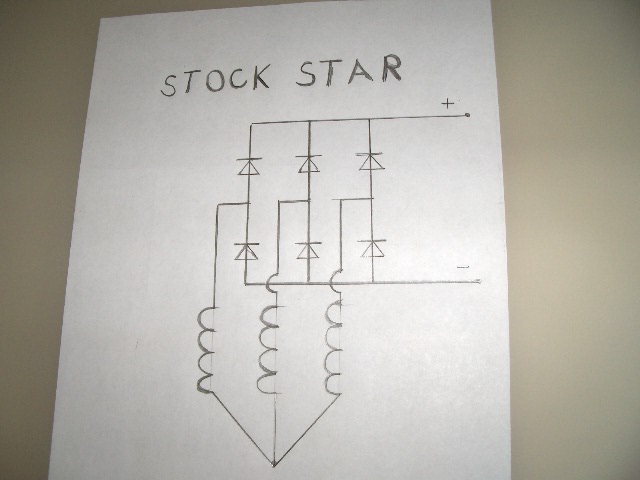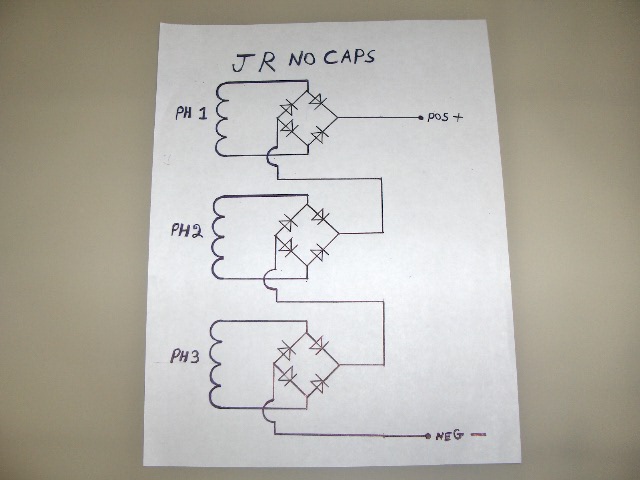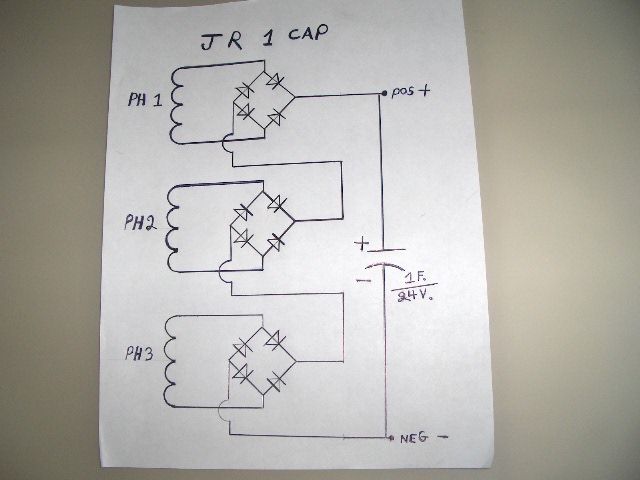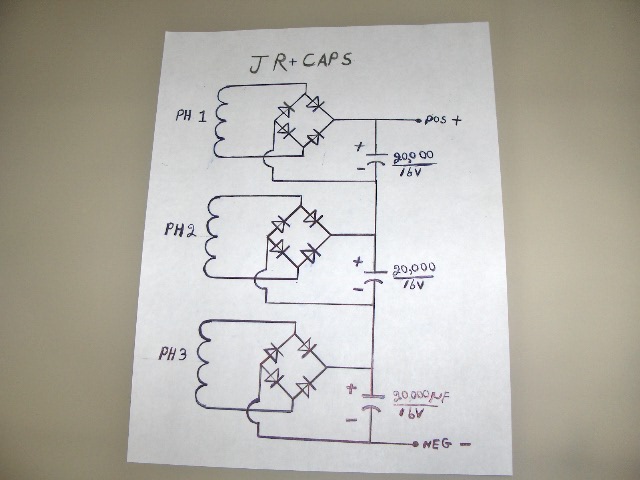Hi G.
The Garbogen is not a good canidate for caps. It has run and start windings. These have diferant potential.
The runs are wound with fewer turns of heavyer wire, the starts have more turns of smaller wire.
It was a single phase motor that become a 2 phase pma. Each phase has its own and seperate fullwave bridge rectifier then there dc outputs are perelelled.
Apling a cap at this point has no effect.
If the starts and the runs were identical and the 2 bridge dc ouput were wired sires, then the caps would have the desiered effect.
However this would make for some very high voltage.
I've been expirimenting with GM car alternators. These are used by Hornet, Malard, Freetricity and such COs.
I have a Hornet and it sucks. 2 problems with these types of machines.
- they are car alternators and nned very high rpm.
- there very high rpm blades don't work till 15 mph.
My attemp is to make the alternator work at much lower rpm without rewinding it with 22 ga. wire and use the stock windings. Then use a blade that actuly responds to low wind.
These alts are 3 phase. In the star mode a phase is making 10 volts and its in sires with the next phase the voltage is not 20 its 17v.
My scheam treats each phase as a seperate power supply. Coil to bridge to cap.
This makes a nice stable power supply. Now when I sires these 3 power supplies the volage is much higher and or the rpm requierment is greatly reduced.
On a typical ac power supply, when a power transformer is supplying 10 volt ac at the AC terminals on a fullwave bridge rectifier and there is a cap conected to the DC termanals of the fullwave bridge rectifier the DC voltage on the measures around 14 v.
3 X 14v = 42 is a better result then 2 X 10v = 17 volts.
Each phase of a car alternator must be capable of handeling the alternators rate amperage.
I'm working with 60 amp alternator here. I'm not sufering any capability of amperage here but the voltage is greatly increased or the rpm is greatly reduced.
Even with these improvments this is still a high rpm small blade machine. But now Its a more usable worthless machine.
A 3 phase moror conversion might be a good canidate for this mod if you are needing 500 volts for a WindyBoy grid tie inverter?
But not the Garbogen. It noes not fit this scheam.
Here are the schimatics of the GM alt mods I,ve made.
This is the stock GM alt 3 phase. It is the worst prefomer in this test.

Here is the "Jerry Rigged" version without the caps it did better then star by far but not as good as the caps version.

Here is the version with one single 1 farrad cap accross the 2 outside terminals. It did not work any better then the no cap version.

Here is the best preforming mod. a cap on each bridge DC output. 3 DC power supplies wired in sires. I did this with some 20,000 UF- 16 volt caps and some 630,000 UF- 6.3 volt caps. The preformance was the same.


JK TAS JERRY